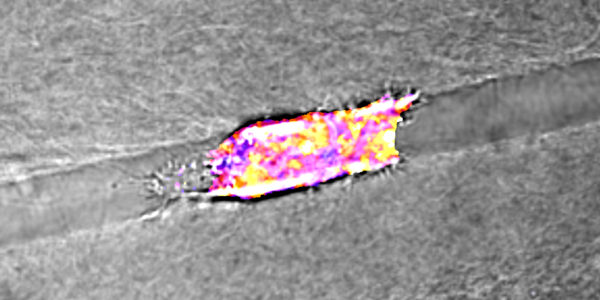On-the-move most cancers cells desire a “consolation cruise,” comply with predictable paths of least resistance | Vanderbilt Information
[ad_1]
New analysis from a gaggle of Vanderbilt biomedical engineers reveals that whereas most cancers cells transfer rapidly in metastasis, they’re fairly lazy during which paths they select.
In accordance with the researchers, migrating most cancers cells determine which path within the physique to journey primarily based on how a lot vitality it takes, opting to maneuver by means of wider, simpler to navigate areas fairly than smaller, confined areas to scale back vitality necessities throughout motion. These findings counsel vitality expenditure and metabolism are vital elements inside metastatic migration, which lends credence to current scientific curiosity within the research of metabolomics and the concentrating on of mobile metabolism as a solution to stop metastasis.
The discoveries seem in a brand new paper, “Energetic prices regulated by cell mechanics and confinement are predictive of migration path throughout decision-making,” printed right this moment within the journal Nature Communications.
Led by Cynthia Reinhart-King, Cornelius Vanderbilt Professor of Engineering, the analysis is the primary research to quantify the energetic prices of most cancers cells throughout metastasis – enabling the prediction of particular migration pathways. These new findings construct on related analysis from the Reinhart-King Lab, printed earlier this yr, which found “drafting” strategies utilized by most cancers cells to preserve vitality throughout migration.

“These cells are lazy. They need to transfer, however they may discover the simplest solution to do it,” famous Reinhart-King. “By manipulating many various variables, we had been in a position to monitor and construct predictions of mobile choice for these paths of least resistance within the physique primarily based on how a lot vitality a cell would wish to maneuver.”
Lead creator on the paper, graduate scholar Matthew Zanotelli, used quite a lot of strategies to check and map out mobile motion, together with monitoring cells by means of a constructed maze of pathways as they manipulated the mechanical properties of every most cancers cell, and even the bodily properties of the paths themselves.
Whereas the scope of the brand new analysis focuses on metastatic most cancers cells, Zanotelli famous that the outcomes of this research might quickly have broader implications for quite a lot of conditions past most cancers.
“The sort of mobile motion occurs in different situations – for instance, throughout irritation and round therapeutic wounds,” mentioned Zanotelli. “We’re excited to have this preliminary understanding of vitality and cell migration and hope it would show foundational for future, broader analysis.”
This work was supported by funding from NIH grant GM131178 and an NSF-NIH PESO Award (1740900) to Cynthia Reinhart-King; NSF Graduate Analysis Fellowships beneath Grant No. DGE-1650441; a NSERC Discovery grant (RGPIN-2018- 06214) and Scholarship for the Subsequent Era of Scientists from the Most cancers Analysis Society. This work was carried out partially on the Cornell NanoScale Facility, a member of the Nationwide Nanotechnology Coordinated Infrastructure, which is supported by NSF grant ECCS-1542081.
[ad_2]
Supply hyperlink